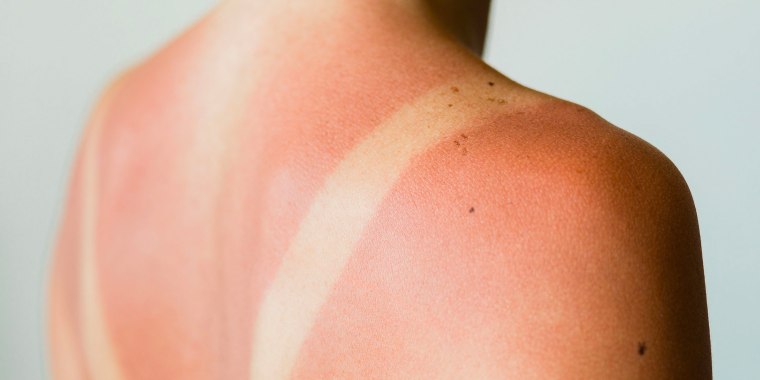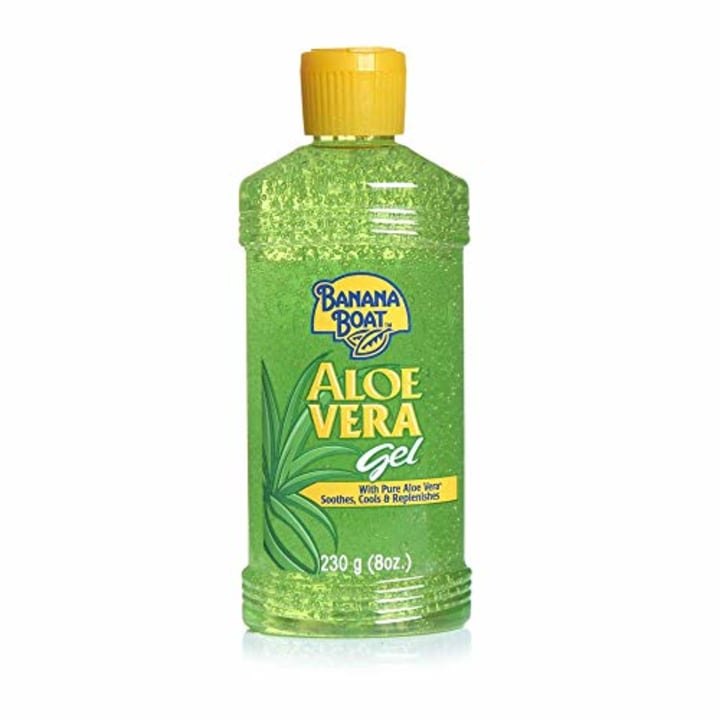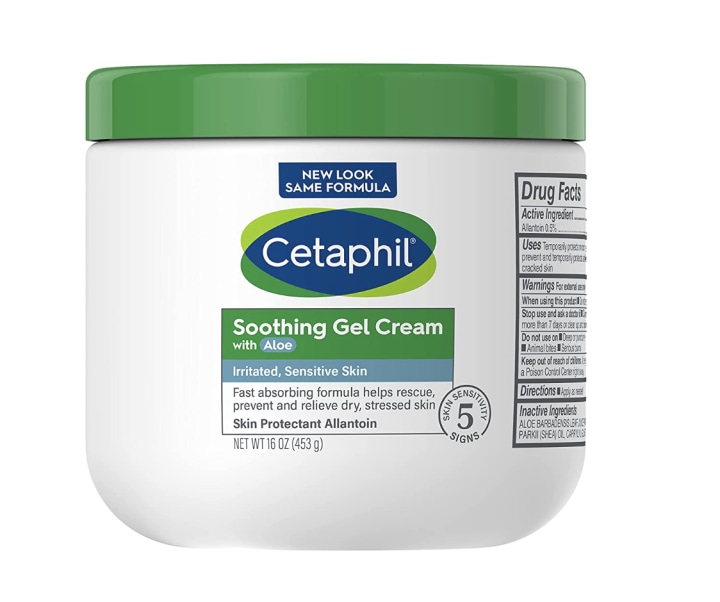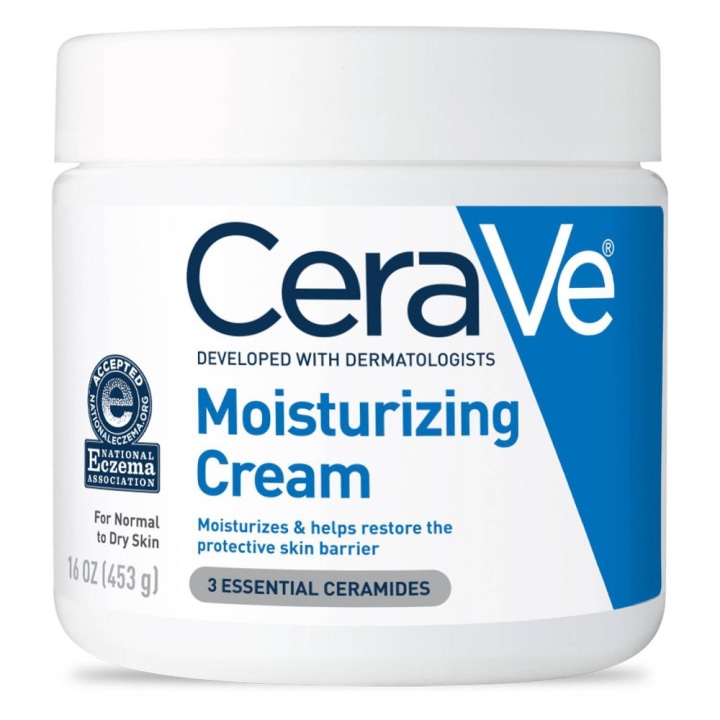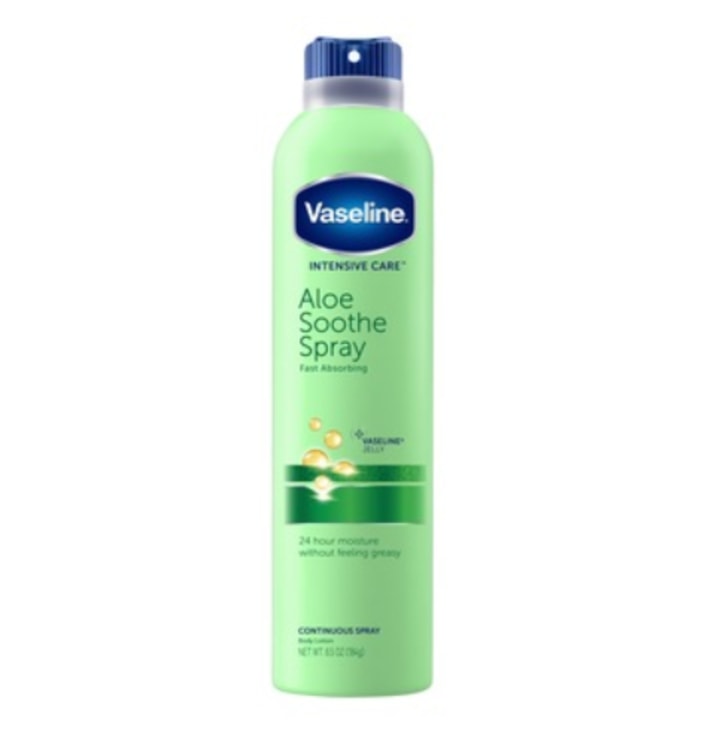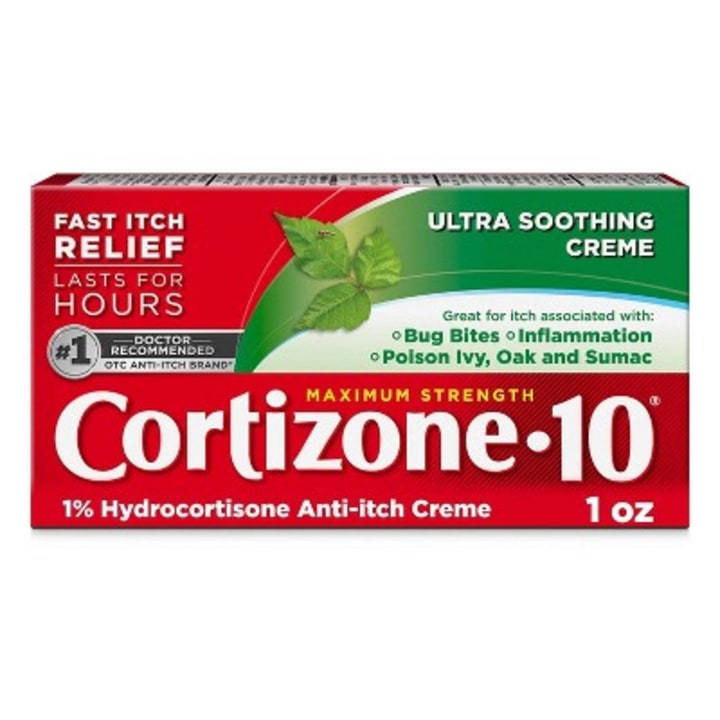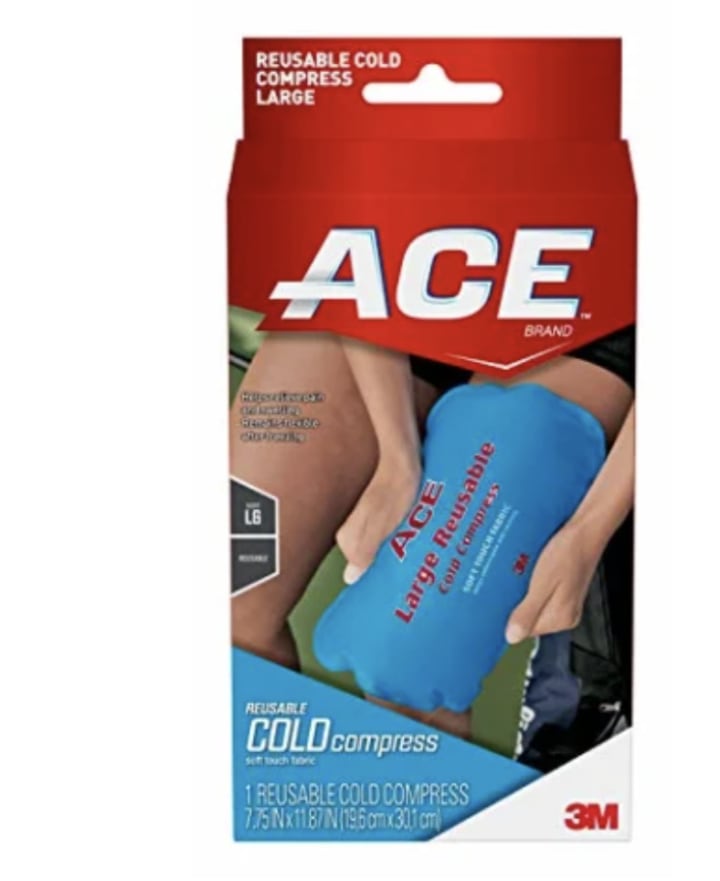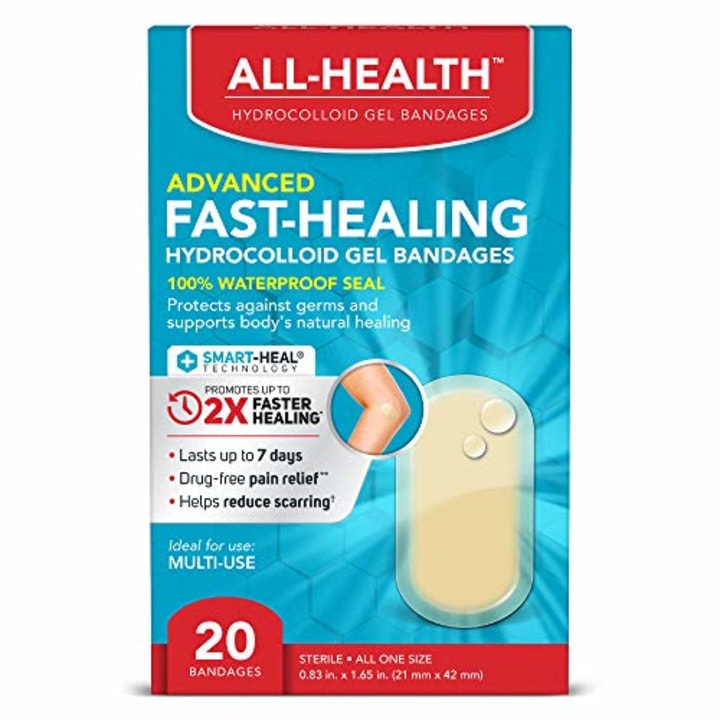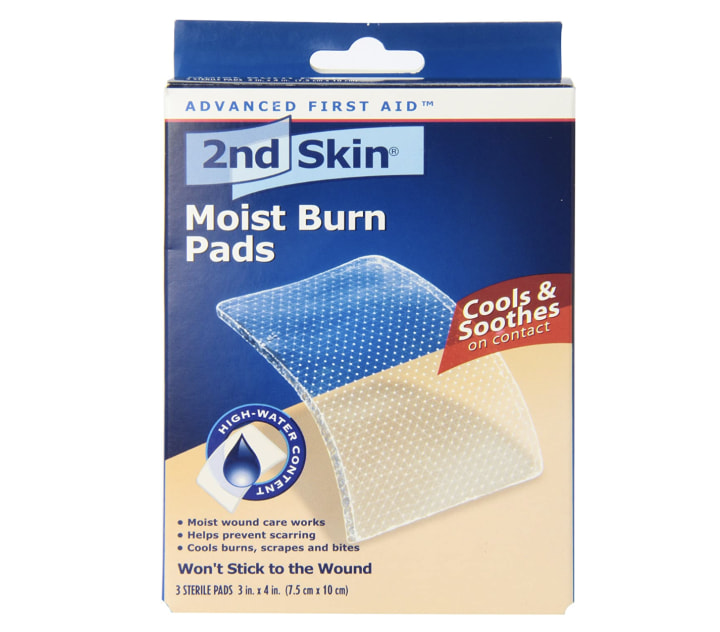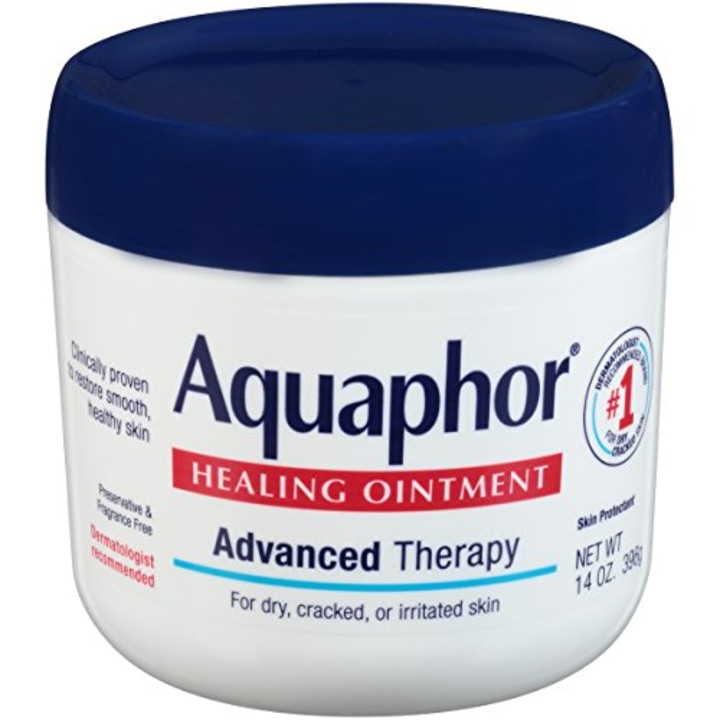Even when we wear sunscreen and UPF clothing, sunburns happen — in fact, one out of every three Americans reports getting sunburned each year, according to the U.S. Department of Health and Human Services. Sunburns range in severity from redness to blistered skin, but even the most mild ones can be uncomfortable. To learn how to treat sunburns at home, we talked to dermatologists about what over-the-counter products they recommend using and how to know when it’s time to see a doctor.
SKIP AHEAD Best sunburn treatments | What is a sunburn? | How to treat a sunburn | How to prevent a sunburn
Our top picks
- Best aloe vera gel for sunburns: Banana Boat Soothing Aloe After Sun Gel
- Best itch-relief cream for sunburns: Cortizone 10 Maximum Strength Plus Moisturizing Cream
- Best bandages for blistered sunburns: All Health Hydrocolloid Gel Bandages
How we picked the best sunburn treatments
Dermatologists told us to think about the following when shopping for sunburn treatments:
Symptoms you’re experiencing: This determines what type of over-the-counter products are right for you, like those that target pain-relief or itch-relief, for example.
Ingredients: If you’re buying a topical treatment like a cream or ointment, experts recommend staying away from those made with fragrances and alcohols, which can further irritate skin. Prioritize mild options made with soothing, hydrating ingredients like aloe vera.
The best sunburn treatments to use
With dermatologists’ recommendations in mind, we rounded up over-the-counter products you can use to treat sunburns at home. Experts told us it’s crucial to stay hydrated while recovering from a sunburn, so be sure to drink plenty of water (having the right water bottle might encourage you to do so). If your sunburn is severe or you feel ill, be sure to see a medical expert for further treatment, like prescription-strength medication.
Banana Boat Soothing Aloe After Sun Gel
All the experts we spoke to recommend applying products made with aloe vera, which is known for its cooling, soothing and moisturizing properties. Banana Boat’s Aloe After Sun Gel can be used on the body and face, according to the brand, and appears clear on skin after you rub it in. It’s available in 8-ounce and 16-ounce bottles.
Cetaphil Soothing Gel Cream with Aloe
If you don’t like the sticky feeling of a gel, some brands offer lotions and creams formulated with aloe vera. It’s best to choose a cream rather than a lotion, says Dr. Mary Stevenson, a board-certified dermatologist and assistant professor at NYU Langone Health’s Ronald O. Perelman Department of Dermatology. Creams, which are typically sold in a pot, are thicker and more moisturizing than lotions (which are usually sold in a bottle with a pump), she explained.
This cream from Cetaphil is made with aloe vera and vitamin E to hydrate and soothe skin. It has a non-greasy feel and absorbs quickly, according to the brand. The cream is also fragrance-free and non-comedogenic, which means it won’t clog pores. You can purchase the cream in 3-ounce, 8-ounce and 16-ounce containers.
CeraVe Moisturizing Cream
Aside from staying hydrated, the best thing you can do for sunburns is apply a plain, unscented moisturizer, says Dr. Michele Farber, a board-certified dermatologist at Schweiger Dermatology Group. Especially for peeling sunburns, it’s important to help your skin repair itself, and applying moisturizer is one way you can do so.
CeraVe’s Moisturizing Cream contains ceramides to restore and maintain the skin’s barrier, plus moisturizing hyaluronic acid. The fragrance-free, non-comedogenic cream has a rich texture and you can use it on the face and body. You can purchase CeraVe’s cream in a 19-ounce tub, 16-ounce tub, 16-ounce tub with a pump, 12-ounce tub, 8-ounce bottle or travel-size 1.89-ounce bottle.
Vaseline Intensive Care Aloe Soothe Spray
Moisturizer is also available as sprays, similar to spray sunscreen. Since spray moisturizer is often more lightweight than a tub of cream, I find it easy to travel with and keep a bottle in my beach bag in case my fair skin gets pink after a day outdoors.
Vaseline makes a non-aerosol spray moisturizer with aloe vera that hydrates and soothes sunburned skin. After rubbing it in, the spray absorbs into skin quickly and leaves behind a smooth, non-greasy and non-sticky feel, according to the brand. Vaseline’s moisturizing aloe spray comes in a 6.5-ounce bottle.
Cortizone 10 Maximum Strength Plus Moisturizing Cream
Hydrocortisone creams help calm itching and irritation, and Farber says over-the-counter options are a good place to start when looking for sunburn treatments that target dry, itchy, peeling skin.
Cortizone 10’s cream is made with 1% hydrocortisone to provide itch relief and aloe vera to moisturize skin. The fragrance-free formula comes in a 2-ounce tube.
Ace Reusable Cold Compress
Cold compresses can relieve inflammation that results from sunburns, Farber says. This one from Ace is surrounded by a touch fabric exterior, so you can apply the compress directly to skin without wrapping it in a towel first. The compress is designed to be flexible to contour to multiple body parts, too. It measures 7.75 inches tall and 11.87 inches wide, about the size of a piece of printer paper.
Best products for blistered sunburns
If your sunburn blisters, don’t pop or pick at skin — doing so can lead to infections or future scaring, experts told us. Instead, experts recommend trying the below treatments.
All Health Hydrocolloid Gel Bandages
If your sunburn is just red and itchy, avoid bandaids and stick to moisturizers, Farber says. But if your sunburn takes a turn for the worst and blisters, moist dressings like hydrocolloid bandages can promote healing. These bandages have a water-resistant seal and can be worn for up to seven days after application, and help reduce scarring, according to the brand. You can purchase the bandages in packs of three, six or 20.
Spenco 2nd Skin Moist Burn Pads
In addition to bandages, moist dressings like these burn pads can help soothe and cool skin, plus provide a barrier that keeps the area clean and moisturized, says Farber. Spenco’s 2nd Skin Moist Burn Pads have a high water content, according to the brand, and after placing them atop your blistering sunburn, you cover the pad with adhesive tape or stretch gauze. You can purchase the burn pads in small, medium and large sizes.
Aquaphor
Petroleum jelly has occlusive properties, meaning they help seal water into a disrupted skin barrier, Farber says. If blisters open up into skin erosions, you can apply Aquaphor or Vaseline — which are both primarily made from petroleum jelly — to affected areas to help prevent a secondary skin infection. In addition to an ointment, you can also buy Vaseline spray and Aquaphor spray.
What is a sunburn and why are they dangerous?
A sunburn “is a sign that your skin has excessive UV radiation,” says Dr. Michael C. Cameron, a board-certified dermatologist and assistant clinical professor of dermatology at Mount Sinai Icahn School of Medicine. Different degrees of sunburns are determined by the depth of damage to the skin. “A first-degree sunburn affects the top layers of the skin and usually is red, warm and swollen,” Farber says. “Second degree burns involve deeper layers of the skin and blistering.”
The inflammatory response to UV exposure occurs because UV radiation damages the DNA inside skin cells, thus leading to a sunburn and sometimes pigment formation (a tan), Stevenson explained. “It’s your body trying to defend itself,” she said. “Everyone’s skin type is different, but if you’re getting color or burning, you are getting UV damage.”
Dr. Dina Strachan, a board-certified dermatologist at Aglow Dermatology, says a sunburn can range from a mild skin redness, tenderness and blistering to experiencing a fever, chills or nausea. A sunburn can be dangerous because of these systemic symptoms — for example, extensive blistering and fluid loss can lead to dehydration and require IV hydration, Strachan says.
According to The Skin Cancer Foundation, five or more sunburns more than doubles your risk of developing potentially deadly melanoma, and UV damage can occur even when there is no obvious sunburn. Just one blistering sunburn in childhood or adolescence more than doubles a person’s chances of developing melanoma later in life.
How to treat a sunburn: What to use and what to avoid
Cameron says that how you treat your sunburn depends on whether or not there is blistering and signs of a secondary infection like pus, drainage or a systemic response such as a fever or chills. For most mild sunburns, Farber says it’s best to apply a thick moisturizer to irritated areas and hydrate. She recommends aloe vera and cold baths to calm sunburned skin, and Cameron recommends ibuprofen to reduce swelling, redness and pain. However, deeper burns can require a doctor’s visit and more aggressive treatment. For example, a prescription-strength silver sulfadiazine topical cream is commonly given to patients with more severe burns, Stevenson says.
Farber does not recommend treating sunburns with apple cider vinegar and witch hazel — two popular at-home remedies — as they can irritate sunburned skin. Additionally, all the experts we spoke to said you should not pop blisters or pull at peeling and flakey skin.
How to avoid sunburns
While the occasional, mild sunburn may not be a big deal, studies also show that a history of sunburns — especially blistering (also known as second degree) sunburns — can increase your risk for skin cancers later in life. That’s why it’s important to focus on preventing them, especially in the warmer months when sun exposure is more intense. Two of the best ways to prevent sunburns are wearing sunscreen on your face and body and wearing UPF clothing, as well as UPF hats to shade the face. Dermatologists recommend making applying sunscreen part of your daily skin care routine, and if you’re sweating or in the water, be sure to reapply SPF as directed on the product’s packaging.
Meet our experts
At Select, we work with experts who have specialized knowledge and authority based on relevant training and/or experience. We also take steps to ensure that all expert advice and recommendations are made independently and with no undisclosed financial conflicts of interest.
Dr. Mary Stevenson is a board-certified dermatologist and assistant professor at NYU Langone Health’s Ronald O. Perelman Department of Dermatology.
Dr. Michele Farber is a board-certified dermatologist at Schweiger Dermatology Group, which has offices across the East Coast.
Dr. Michael C. Cameron is a board-certified dermatologist and assistant clinical professor of dermatology at Mount Sinai Icahn School of Medicine.
Dr. Dina Strachan is a board-certified dermatologist at Aglow Dermatology in New York City.
Why trust NBC Select?
Zoe Malin is an associate updates editor at Select who covers skin care topics like spray sunscreen, tinted sunscreen, sunscreen to acne-prone skin and more. For this piece, she interviewed four experts to gather their shopping tips, and researched sunburn treatments with their guidance in mind.
Catch up on Select's in-depth coverage of personal finance, tech and tools, wellness and more, and follow us on Facebook, Instagram and Twitter to stay up to date.
